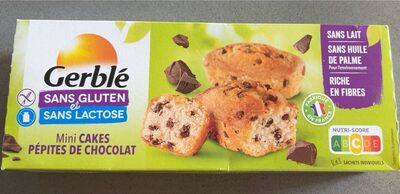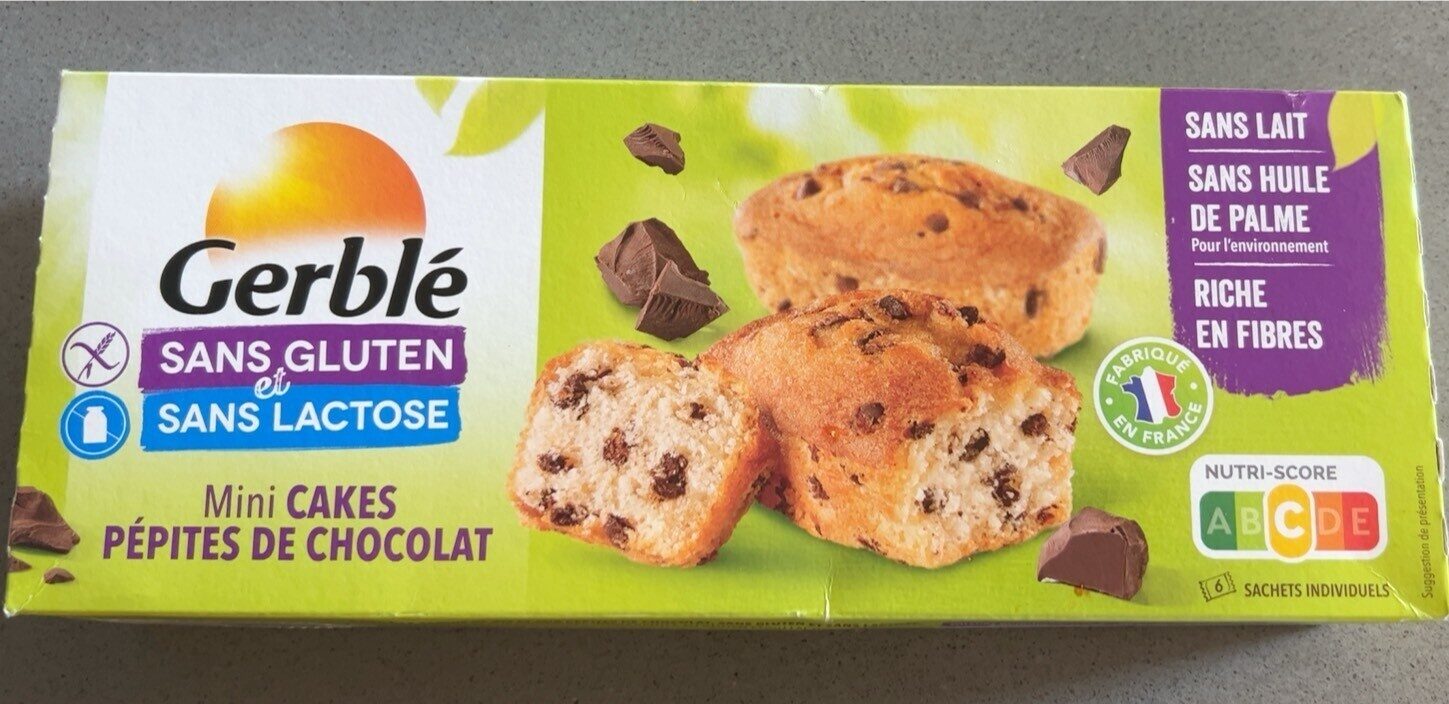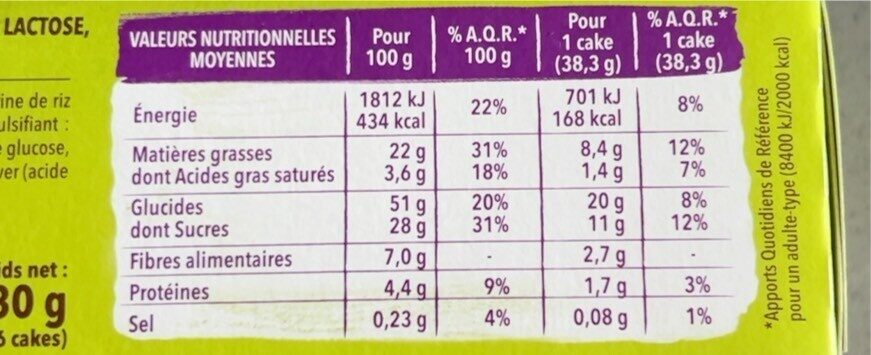Mini Cakes pepites de chocolat - Gerblé - 230g
This product page is not complete. You can help to complete it by editing it and adding more data from the photos we have, or by taking more photos using the app for Android or iPhone/iPad. Thank you!
×
Barcode: 6163789
Quantity: 230g
Packaging: 6 sachets individuels
Brands: Gerblé
Categories: Snacks Sweet snacks Biscuits and cakes Biscuits chocolate-cakes
Labels, certifications, awards: No gluten, No lactose, No glutenNutriscorenutriscore-grade-c
Origin of ingredients: Œufs origine UE chocolat origine Belgique
Manufacturing or processing places: Oise
Stores: Carrefour
Countries where sold: France
Matching with your preferences
Environment
Packaging
Transportation
Report a problem
Data sources
Product added on by kiliweb
Last edit of product page on by kiliweb.
Product page also edited by alexfauquette, allergies-app-chakib, fabi2, mairoluin, manon28, roboto-app, yuka.sY2b0xO6T85zoF3NwEKvlhZWWP6PojPlPD3nkxyZxtfXBc3qUfR304v7Mag, yuka.sY2b0xO6T85zoF3NwEKvlmtmTPHQuArCFxHSvEeTxe7eKbjxQs552rf5E6s, yuka.sY2b0xO6T85zoF3NwEKvlnFIU_rfvG3mZgDnmlLU6YvXCKDSTexQw7ilP6s.









